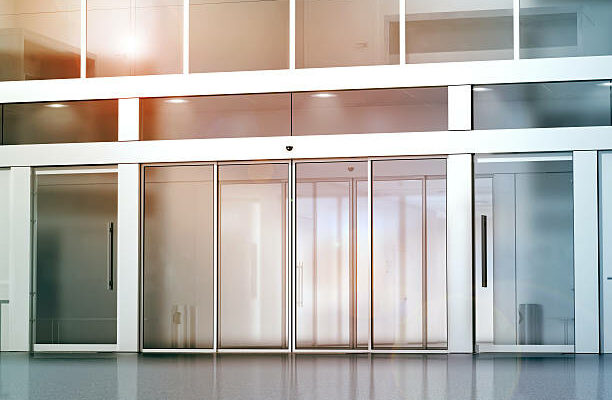There are several reasons for getting fire-rated glass doors for several reasons. The first is that fire doors are much safer than standard doors. A fire door is rated to protect your business from smoke or flames by passing the IBC standards. If you are building a commercial property, you should also check your insurance policy for limitations regarding fire-rated glass. Fire-rated glass doors come in several types and have various levels of protection.
Wired glass
Until recently, the only fire-rated glass product available on the market was traditional wired glass. The wired glass often characterized fire doors installed in schools and hospitals as safety glazing. This glass is only half as strong as ordinary window glass, and the wires can trap a victim’s limbs. Today, fire-rated glass is available in several different types, such as tempered, ceramic, and intumescent laminated glass.
The glass must be rated for a proper fire door for a specific timeframe. The IBC only permits flush-mounted doors with a three-hour fire rating, and other ratings are determined by door manufacturers and Underwriters Laboratories or Warnock Hersey. The fire door manufacturer can supply the maximum visible area of glass in a fire door. Most commercial fire door manufacturers have technical charts for specific types of glass.
Ceramic glass
Fire-rated glass products are those that meet the requirements of the International Building Code. The material used for fire-rated glass doors can be either clear or tinted. Fire-resistive glass can handle a temperature change of 425 degrees Celsius and has a fire rating of up to 180 minutes. This type of glass is suitable for fire-rated doors but does not offer thermal insulation. Instead, you can opt for intumescent glass doors for optimum safety in your building.
A fire-rated door should also have hardware compatible with the fire-rated glass. The glass should be in proportion to the frame size. The door should also be made of fire-resistant materials, such as aluminum. Fire-resistant glass is fire-rated if it is backed by a warranty covering the entire frame and glazing.
Tempered glass
When fire breaks out, standard tempered glass will shatter and release smoke. However, fire-rated glass has been specially manufactured to withstand temperatures as high as 1500 degrees F. As a result, fire-rated glass prevents the spread of smoke, flames, and extreme radiant heat. It greatly reduces the possibility of injuries. When choosing fire-rated glass, however, you should consider the price tag.
Fire-rated glass is designed for enclosed areas like stairwells and exit corridors. The temperature of the non-fire side must be no higher than the temperature of the surrounding space. Fire-rated glass undergoes rigorous testing to ensure its integrity and safety. It is subjected to high temperatures in a furnace at 1,700 degrees Fahrenheit. Once the glass passes the testing, it must remain intact for a certain time without shattering. This test ensures that the glass is a safe barrier against flames.
Currently, there are several types of fire-rated glass available. WireLite-NT, for example, is a fire-resistance glass that blocks smoke and flame. Unlike laminated glass, wired glass can stop fire for up to 45 minutes. Fire-rated glass also resists impact. However, unlike laminated glass, super-tempered glass breaks when struck by a stream of water after the fire.
Laminated glass
A key factor in making sure that your laminated glass doors are fire rated is the glass. The glass should meet the same fire rating as the door frame. Fire rating standards vary from region to region, but generally, fire-rated glass must adhere to local building codes. Check the labels to find out if your laminated glass doors meet the required standards. It is important to follow building codes as closely as possible to ensure the highest quality product.
Fire-rated glass has a minimum of a twenty-minute fire rating but can also be 45-minute rated. It is also free of UV-sensitive interlayers. It is also optically clear, allowing high light transmission values up to 89%, making it an excellent choice for high-impact safety-rated locations.
While wired glass is still used in some applications, it is not rated for fire resistance. Other types of fire-resistant glass, such as ceramic or intumescent laminated fire glass. These are fire-rated, but they have their disadvantages. For example, wired glass is susceptible to breakage and may not be good for doors or vision panels. Despite these drawbacks, wired glass is the most cost-effective and safest option for most applications. However, wired glass has some limitations, including non-insulating against heat radiation and having integrity-only fire protection.
Fire-rated glazing requires special framing to protect them against fires. Fire-rated glazing should be installed in a frame that meets NFPA standards. When choosing a fire-rated glass door, be sure to check the code requirements. In many cases, a building code allows fire protective framing if it is compatible with the glazing. If the fire-resistant glass is a sidelite or transom, be sure that it meets ASTM E-119 standards as well. You may check SG Specialties article about fire rated glass doors to learn more about this.




Comments